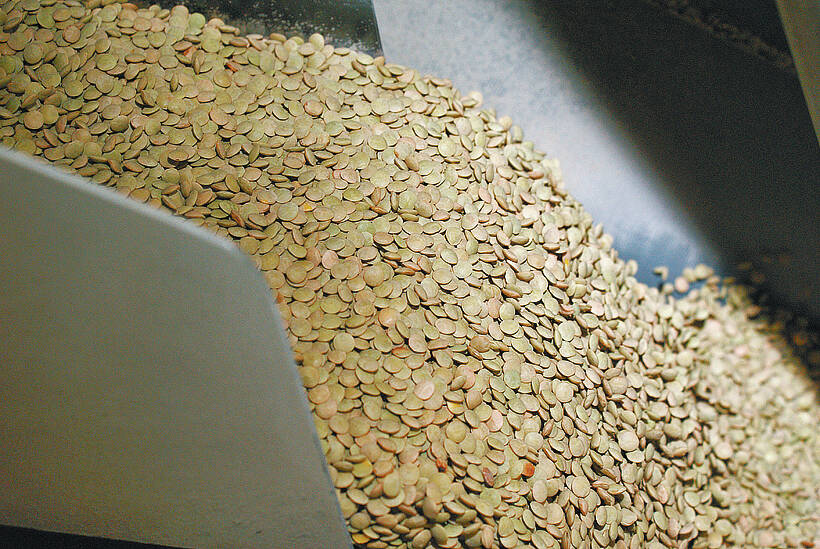This cattle market information is selected from the weekly report from Canfax, a division of the Canadian Cattlemen’s Association. More market information, analysis and statistics are available by becoming a Canfax subscriber by calling 403-275-5110 or at www.canfax.ca.
Fed cattle down
Weighted average prices for fed steers were $165.85 per hundredweight, down $2.06, and heifers were $164.60 in light to moderate trade.
Most business in rail grade trade was at $276 per cwt. delivered, down $4-$8.
Read Also

Green lentil market oversupplied
Farmers in Western Canada can expect price pressure on their new crop of green lentils, as the available supplies among the world’s major lentil-growing nations increase significantly.
The week’s Alberta cash-to-futures basis strengthened $5 to -$6.08 and is now stronger than the five-year average.
Weekly western Canadian fed slaughter in the holiday-shortened week to March 26 fell 12 percent to 27,199 head.
Fed steer weights for the week were six pounds down from the previous week. Heifer carcasses were down two pounds.
Weekly fed cattle exports to March 19 were modestly larger at 7,822 head.
Prices are under pressure from lacklustre beef demand and the higher Canadian dollar.
In the United States, light fed trade developed midweek with live prices US$3 lower than the previous week at $133.
Dressed sales in the northern U.S. were $4-$5 lower at $214-$215.
The potential for a larger U.S. corn crop has feed grain prices under pressure. If it continues, it will eventually lead to larger numbers of slaughter cattle.
Cows lower
Canadian cow prices have re-cently underperformed the American market, but prices are still at a slight premium to the U.S.
D1, D2 cows ranged $95-$109 to average $101.25 per cwt., down $1.88. D3 cows ranged $80-$99 to average $90.38. Rail grade cows ranged $195-$200.
Slaughter volumes should fall this month because non-fed supplies trading through commercial auction facilities have been light.
Feeders weaker
Steers and heifers 500-600 lb. have lost nine to 12 percent from the highs in February and are now trading at the lowest levels this year.
Canadian 550 lb. calf cash prices have gone from a slight premium over the U.S. to a slight discount.
Backgrounders who bought calves in the fall are looking at significant losses, and many are struggling to recoup what they initially paid, depending on when the calves were bought.
These losses have backgrounders reluctant to buy now.
Dry conditions across parts of the Prairies have some producers nervous about a possible repeat of 2015, when dry weather in the first half of the growing season hurt pastures.
There are premiums for seed stock heifers and prices range $1,500-$1,800 per head, depending on quality.
Weekly exports were the largest this year.
Larger than expected U.S. corn seeding plans pushed down corn prices, which will also weigh on feed barley.
Bred cows ranged $1,500-$2.600, and cow-calf pairs ranged $2,000-$2,750.
U.S. beef weakens
U.S. boxed beef prices fell with Choice down US$3.85 per cwt. at $220.99 and Select down $6.83 at $210.48.
Demand remained sluggish while offerings were generally moderate to heavy.
U.S. boxed beef prices are down 14-16 percent from this point last year, and beef production is up two percent.
Lower beef prices and improved availability may allow retailers to feature beef more often to encourage sales.
Weekly Canadian cut-out values to March 19 saw AAA up C$2.61 at $296.19 and AA up $3.77 at $286.29.
AAA prices are up $8 since late February, and AA prices are up $10. However, prices remain three to six percent below year-ago levels.














